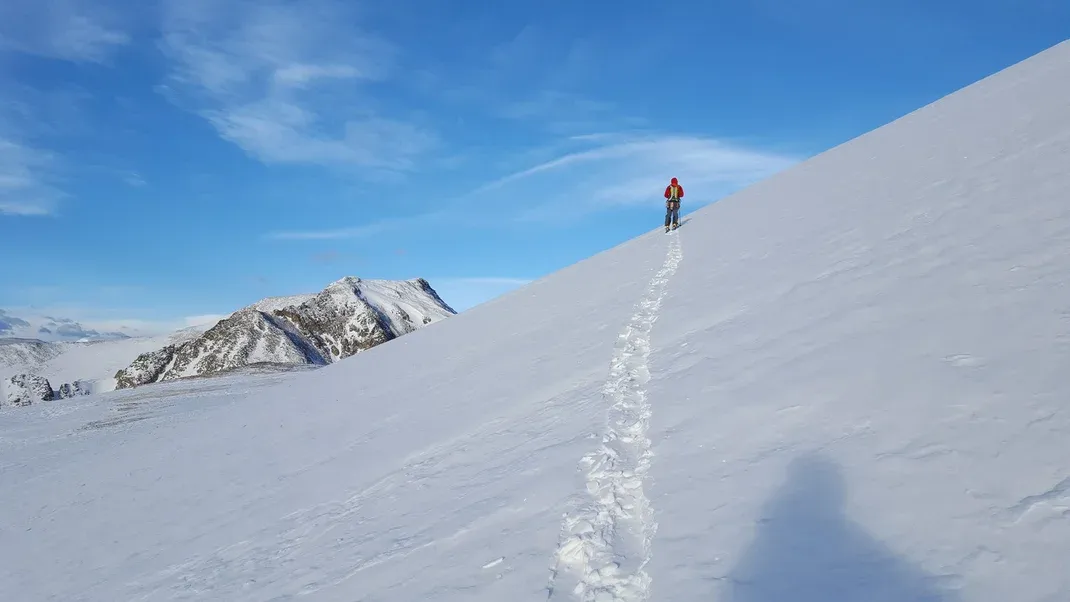How to Hike Mountains (Safely!) in Winter
Hiking mountains in winter can be a beautiful and rewarding experience, but it also comes with its own set of challenges. To hike safely in winter, it's important to be properly prepared with the right gear, clothing, and knowledge of the area. This includes wearing layers, waterproof clothing, and insulated boots, as well as bringing essential items like a map, compass, and first aid kit. It's also crucial to check the weather forecast and trail conditions before heading out, and to let someone know your hiking plans. Additionally, it's important to pace yourself, stay hydrated, and be aware of signs of hypothermia and frostbite. With proper preparation and caution, winter hiking can be a safe and enjoyable adventure.

Hiking mountains in the winter can be a challenging yet rewarding experience. The crisp air, the snow-covered landscape, and the solitude of the trails can create a sense of peace and tranquility unlike any other time of year. However, winter hiking also comes with its own set of risks and challenges, and it's important to be well-prepared and knowledgeable before venturing out into the winter wilderness. With the right gear, preparation, and precautions, you can safely enjoy the beauty of the mountains in the winter.
First and foremost, it's essential to be prepared for the cold and unpredictable weather conditions that come with winter hiking. Layering your clothing is key to staying warm and dry. Start with a moisture-wicking base layer to keep sweat away from your skin, then add an insulating layer, such as a fleece or down jacket, and finally, a waterproof and windproof outer layer to protect against the elements. It's also important to wear a hat, gloves, and insulated, waterproof boots to keep your extremities warm and dry.
In addition to proper clothing, it's crucial to bring along the necessary gear for winter hiking. This includes traction devices, such as microspikes or crampons, to provide grip on icy and snow-covered trails. Trekking poles can also be helpful for stability and balance on slippery terrain. A map, compass, and/or GPS device are essential for navigating in the winter, as the trail may be obscured by snow, and it's easy to become disoriented in the white wilderness. A headlamp or flashlight is also important, as winter days are shorter, and you may find yourself hiking in the dark. It's also a good idea to bring along a first aid kit, emergency shelter, and extra food and water in case of an unexpected situation or delay.
Before setting out on a winter hike, it's important to check the weather forecast and trail conditions. Winter weather can be unpredictable, and it's important to be aware of any potential hazards, such as avalanches, whiteouts, or extreme cold. It's also a good idea to let someone know your hiking plans and expected return time, so that they can alert authorities if you don't return as planned. Additionally, it's important to be realistic about your abilities and experience when choosing a winter hiking route. Stick to trails that are within your skill level and comfort zone, and avoid taking unnecessary risks.
When hiking in the winter, it's important to be mindful of the unique hazards that come with cold weather and snowy conditions. Snow-covered trails can be deceiving, and it's easy to underestimate the difficulty of hiking in deep snow. It's important to pace yourself and take frequent breaks to rest and rehydrate. It's also important to be aware of the signs of hypothermia and frostbite, and to take appropriate measures to prevent these conditions. This includes staying dry, changing out of wet clothing, and seeking shelter if necessary.
Avalanches are a significant risk in the winter mountains, and it's important to be aware of the warning signs and to take precautions to avoid avalanche-prone terrain. This includes staying on established trails, avoiding steep slopes, and being cautious when crossing open areas or gullies. It's also important to carry avalanche safety gear, such as a beacon, shovel, and probe, and to have the necessary training to use this equipment effectively.
In addition to the physical challenges of winter hiking, it's important to be mindful of the mental and emotional aspects as well. Winter hiking can be a solitary and introspective experience, and it's important to be prepared for the mental challenges that can arise when facing the cold, the darkness, and the potential hazards of the winter wilderness. It's important to be patient, to stay calm, and to be mindful of your surroundings at all times.
Overall, winter hiking can be a beautiful and rewarding experience, but it's important to be well-prepared and knowledgeable before venturing out into the winter wilderness. With the right gear, preparation, and precautions, you can safely enjoy the beauty of the mountains in the winter. By being mindful of the unique challenges of winter hiking, and by taking the necessary precautions, you can enjoy the peace and tranquility of the snowy mountains while staying safe and well-prepared.






